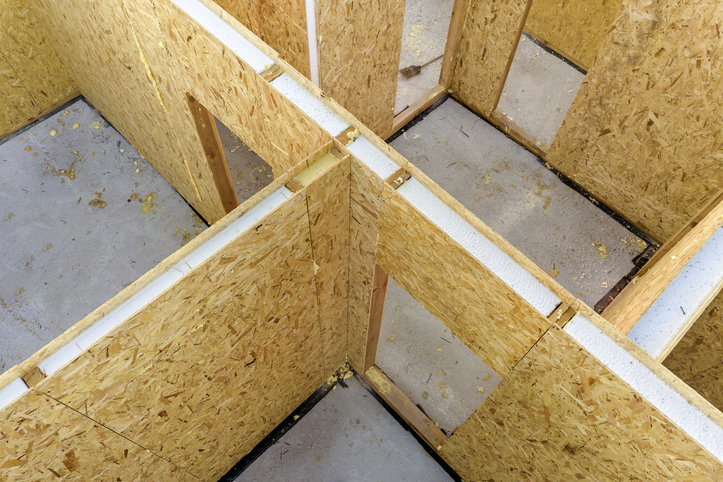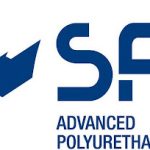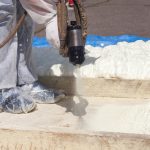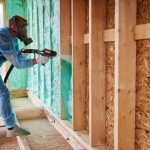Enhance and Tailor Your Capabilities and Capacity
Polyurethane rigid foam, despite its moniker, isn’t limited in scope to the number of industries in which it has become essential.
A common part of multiple industries worldwide, many products and processes rely on the material as part of their design in order to fulfill various tasks and duties.
Both flexible and rigid polyurethane foams have six main components, including polyols and diisocyanates that are the principal elements of all polyurethane products. With the addition of blowing agents, surfactants, catalysts, and curatives, polyurethane foam can take on a wide array of different characteristics to reach better results in different applications.
Polyurethane rigid foams differ from their flexible or semi-flexible counterparts due to cell structure. This higher percentage of ‘closed’ cells gives rigid foam higher load-bearing capacities, lower thermal conductivity, and good water resistance. Add in other traits such as excellent tensile and tear strength, and elongation metrics, and it’s easy to see why the material is ideal for use as a construction and insulation material.
In the construction industry, polyurethane rigid foam is important to the structural integrity of both commercial and residential buildings. It provides a high level of insulation for walls, doors, and windows, and reduces noise as well. Rigid foam can also be used as a structural element on its own, such as with architectural trim, signage, or in other elements that mimic wood but without the issues that prove problematic for wood like rot, water damage, or insects.
Consumer products also rely on polyurethane rigid foam for thermal insulation for appliances as it is used to insulate refrigerators, freezers, hot water heaters, ice machines, and drink machines, among others.
The automotive industry is another sector that has employed rigid foam to great effect. Used as an energy-absorbing material, parts are molded from the material and then installed in the bumpers, or in the knee area of the seating compartment. Foam is also used to cut down on noise and vibrations in components like doors, dashboards, and ceilings.
Versatile far beyond what the name implies, polyurethane rigid foam is part of every manufacturers’ line of product offerings. But what kinds of processes go into making rigid foam and what can you do to ensure the end product meets the desired performance? Let’s examine various elements of the production environment to learn more.
We’re the Polyurethane Experts: Contact us today to learn how Linden Industries can serve as your partner in all things polyurethane.
Begin with Consistent Metering
Polyurethane metering systems are the beginning point of the rigid foam production environment. Not only are they at the center of the entire process, but they’re also vital parts needed to achieve the right material balance and distribution rate for your application.
Metering systems come in two broad types. For example, high-pressure metering systems excel in applications that require a high volume, or for low-output situations for open or closed mold pourings. For the best results in these instances, you’ll want properly designed and engineered systems tailored to the application. And when pursuing polyurethane rigid foam — and the demands typically asked of it — you’ll want the chemical metering system possible to guarantee performance standards.
For applications where lower volumes, higher or varying viscosities, or other non-polyurethane chemicals are needed, low-pressure metering systems are the go-to option. These expertly engineered systems must navigate proper flow for multiple materials, ensuring effective treatment prior to their distribution. Applications demanding this level of performance include many of those insulation varieties in the construction and automotive industries.
Gas Nucleation for Positive Additions
As the chemical mixture for polyurethane rigid foam is properly metered out, you can enhance the performance and other characteristics further with gas nucleation. This process can make the end product lighter, increase the mixing quality of the mixture, and even improve the overall cell structure of the end product.
Lighter rigid foam produces the strength needed without additional weight. A great example of a potential use would be in naval vessels, for buoyancy while also adding sound damping qualities. Improved mixing quality means eliminating voids, and improved wet-ability for a more uniform material that is free from streaks. When a builder is dispersing the foam — say between two studs in new construction — the last thing they want is a material that can’t hold its shape or position. Improved cell geometry ensures uniformity throughout the material and eliminates some of the inability of the material to remain consistent once dispersed. Failure to produce a reliable geometry results in a damaged product that needs to be scrapped, thereby increasing cost and production time.
One of the key gas nucleation processes involves carbon dioxide (CO2), which is dissolved homogeneously into the polyol component of your polyurethane mixture. This nucleation will affect the weight of the mixture. Dry air or dinitrogen (N2) infusion will improve the overall mixing quality. Both processes can help companies ensure their polyurethane application will achieve the desired results while reducing the risk of material failure.
Finish Strong with a High-Performing Mix Head
As one of the last pieces of equipment used in the polyurethane rigid foam production process, mix heads can provide one more opportunity to increase your chances for a successful application and product. The manner in which the material is mixed during this step can, and will, impact performance.
For the best results with rigid foam, L-style mix heads stand out among the options. L-style mix heads combine material at an angle — available in patented 120-degree and 180-degree impingement models — which helps guarantee that it blends thoroughly. These mix heads are available in two-stream, three-stream, and duplex variations to support your production goals and come backed up with an industry-leading warranty program that covers up to 1,000,000 shots and up to 30,000 shots for abrasive materials.
The right mix head is a long-term investment, but if a failure occurs or a repair is needed, you’ll want a proven partner with a simple process for acquiring a replacement. At Linden Polyurethane, our mix heads are not only engineered to the highest quality standards, but our team also provides rapid repair and rebuilding services for many brands — even those of our competitors. Once repaired or rebuilt, our certified team performs testing on the mix head to ensure it will resume its role within your production environment.
Guarantee Your Polyurethane Rigid Foam with the Experts
Linden Polyurethane is a leading manufacturer of custom polyurethane processing equipment for industries around the world. Our high-performance mix heads, metering systems, and gas nucleation options are all custom-engineered to meet your most demanding specifications. Our equipment consistently delivers the performance that companies need to meet their production goals, and it’s all backed up by best-in-class service and support.





